Coming Back After 20 Years Isn’t Just Moving Argentina
It’s been a month since I moved back to Argentina after over two decades living in Europe. Even though the country is familiar, coming back as a resident feels completely different than just visiting on vacation. Some mornings I still wake up disoriented, not fully sure where I am. Of course I miss things about Barcelona, but I’m also reconnecting with parts of myself I’d left behind.
This time, there’s no return ticket. I’m here to stay. I’m rediscovering old habits, flavors, rhythms, and facing the challenge of adapting to a country that’s changed—just like I have. But above all, I feel good about the decision. I’m still working remotely, life kept flowing. It wasn’t a catastrophe; it was a transition.
Salta and Jujuy: A Journey Meant for Observing, Not Just Traveling
As soon as I could, I planned a trip to the north—something I had always wanted to do, and for some reason, this felt like the right moment.
I started in Salta city, walking through its historic downtown, colonial buildings, and climbing the San Bernardo Hill — yes, over 1,000 steps on foot from San Martín Park. The view at the top and the peacefulness made the effort totally worth it.
From there, I hit the road to Tilcara, stopping along the way to soak in the changing scenery: green hills, rust-colored cliffs, old train tracks. In Tilcara, I visited the Pucará, a reconstructed pre-Hispanic fortress built over 900 years ago by the native Omaguaca people. Exploring the ruins, with remnants of homes and burial sites, made me feel the weight of ancient history against modern life.
I sat in the plaza, drank water, caught my breath (you feel the altitude), and tried traditional local food — empanadas, tamales, goat cheese. It was also my first time traveling solo, which brought a completely new dynamic: no one to consult, no shared decisions. Just me and my thoughts, observing, reflecting, and seeing things through my own pace and rhythm.
Later, I drove down to Purmamarca, a small town that’s famous for a reason. I stayed the night and tried something new: llama milanesa from a street vendor who had told me in a previous visit, “Come back, come back!” And there I was.
The next morning, I walked the full 3 km trail around the Hill of the Seven Colors, a path that circles the mountain and reveals new angles and shades with every step—red, violet, green, ochre. You don’t need filters here; everything looks hand-painted by nature. Purmamarca truly left a mark on me.
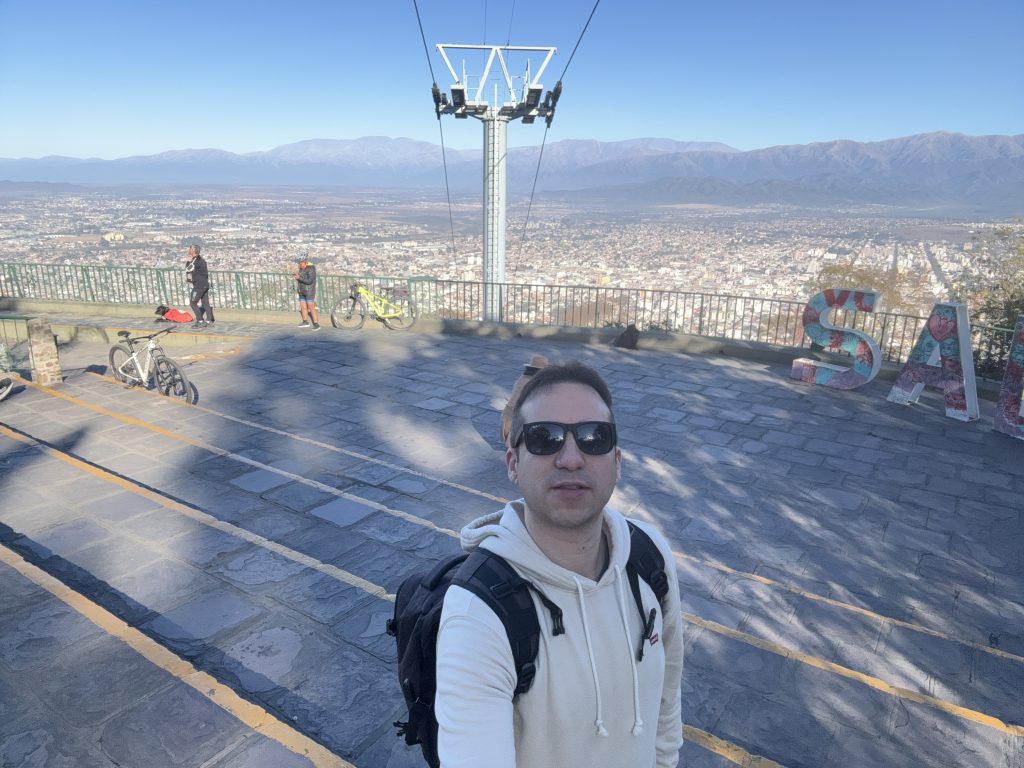
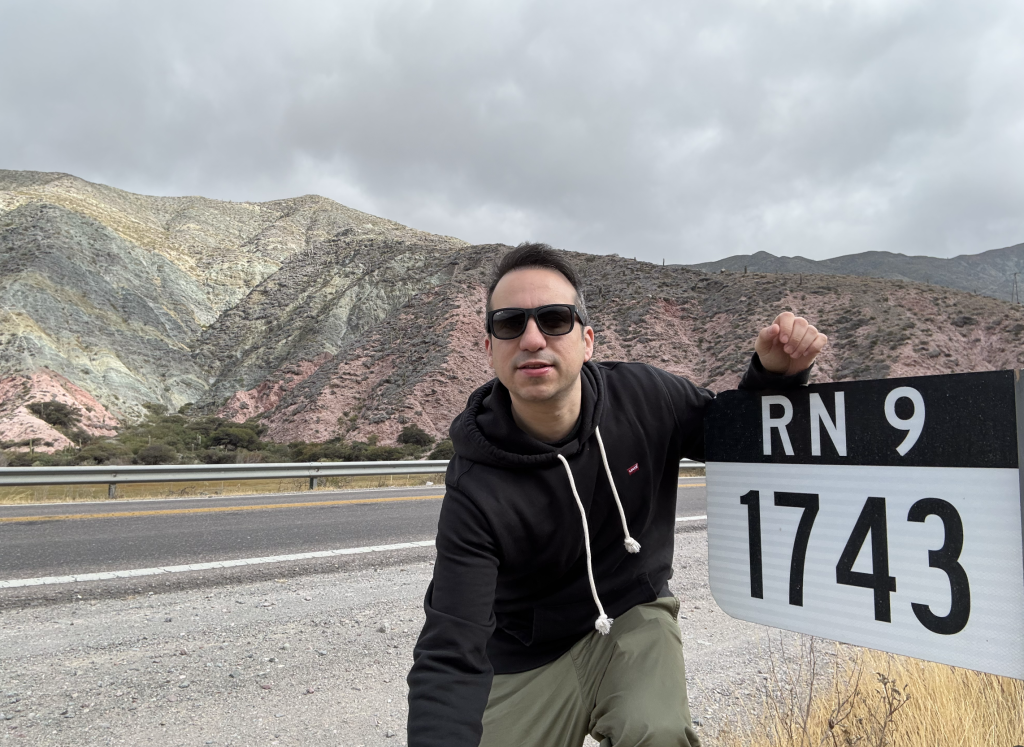
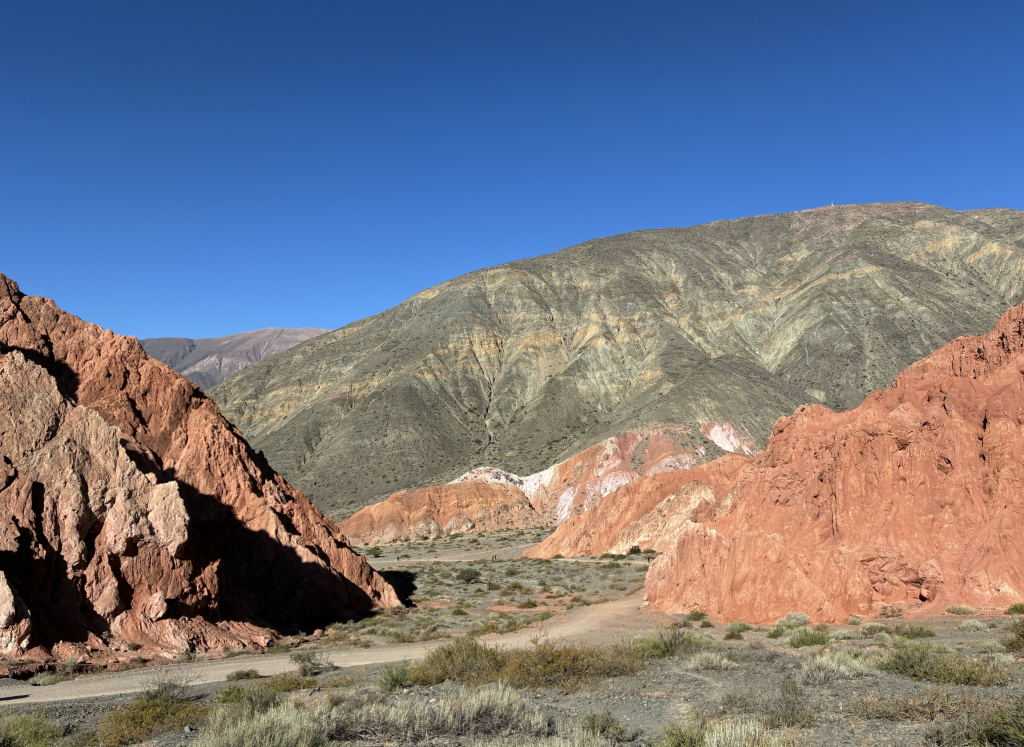
Salinas Grandes — Where the Sky and the Earth Become One
From Purmamarca, I drove along National Route 52, one of the most stunning roads in the north. The landscape morphs constantly—winding curves, multi-colored mountains, and a sky that feels within reach. The Cuesta de Lipán climbs to over 4,170 meters, and at the summit there’s a lookout where most people stop to acclimate and take in the view.
One of the highlights of the drive is spotting llamas along the way, calmly walking by the roadside or crossing as if they owned the place. Honestly, just the drive from Purmamarca to the Salinas Grandes is worth it.
Once you arrive, the landscape flattens completely into an endless stretch of white. The Salinas Grandes sits at 3,400 meters above sea level, with more than 12,000 hectares of dazzling salt flats. It’s surreal.
To enter, you pay a fee (it was $8,000 ARS when I went) and go with a local guide. You follow the guide on your own car while they lead on a motorcycle. They take you to key areas within the flats, explaining the history and geology of the place. You’ll see crystalline water pools that look like they belong on another planet.
The contrast between the white salt, deep blue sky, and absolute silence is hypnotic. It was honestly one of the most beautiful and unusual places I’ve ever been. It reminded me why it’s worth exploring new places—especially in my own country.
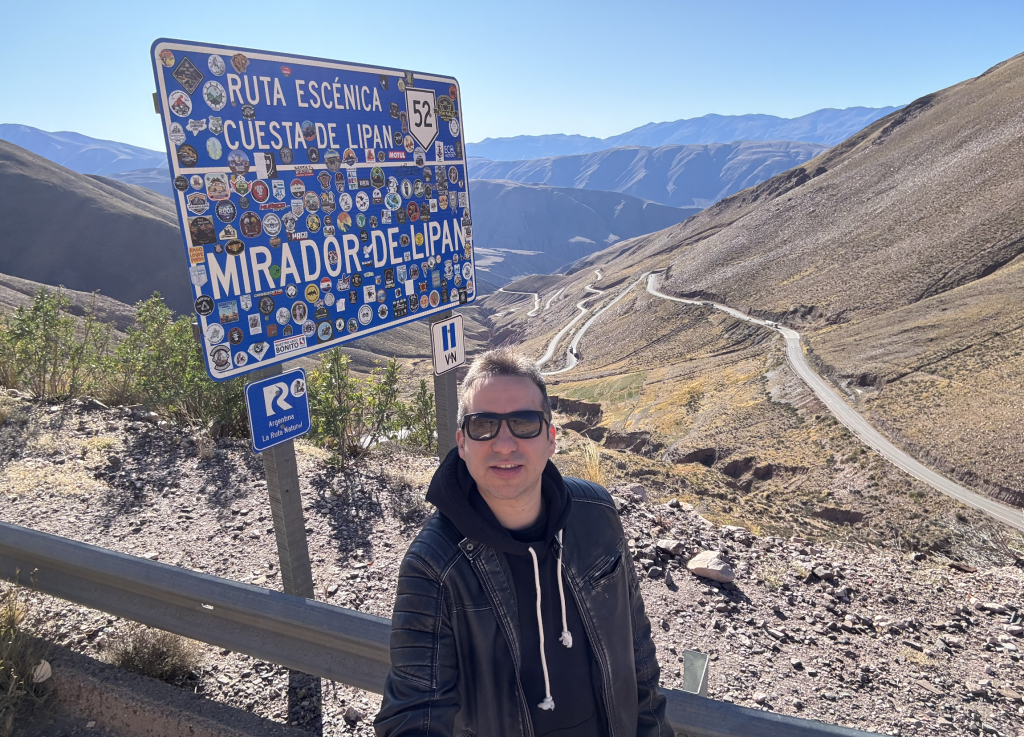
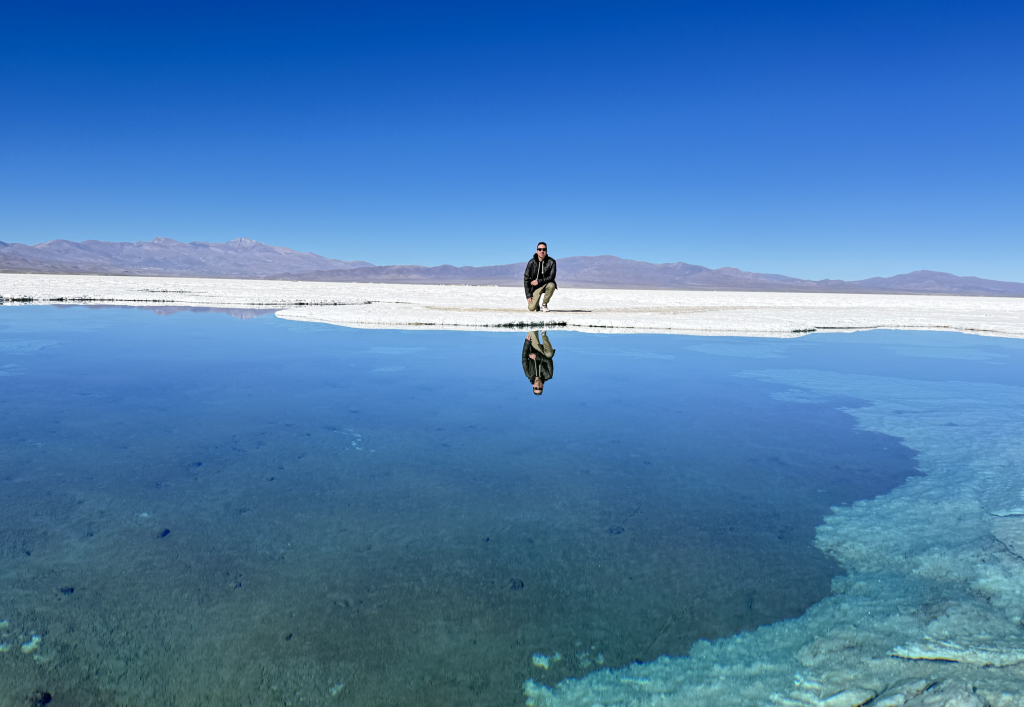
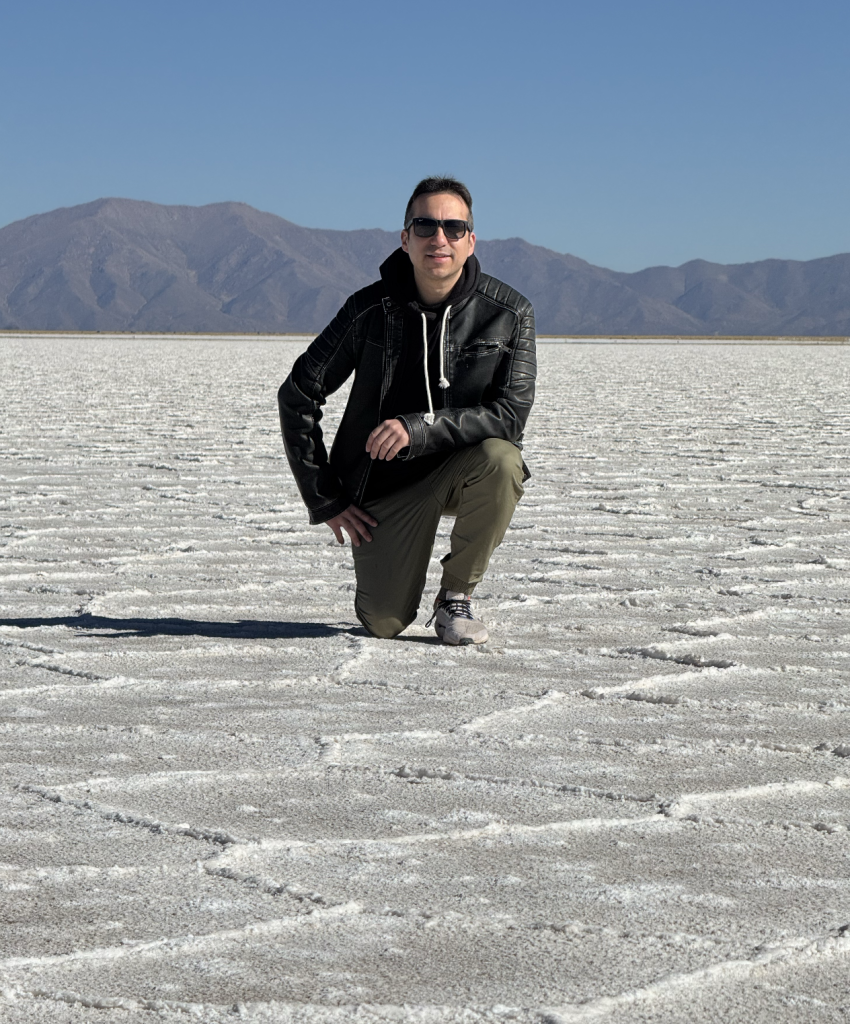
One Month Back — Reflections and What’s Next
This trip wasn’t just about checking destinations off a map. It helped me process this first month back. I realized I’m still working, still creating, and still learning. I’m adapting to things like mobile payment apps, signing up as a freelancer (monotributista), and in many ways, the systems here feel more agile than in Spain.
Now I’m already thinking about what’s next: I want to visit the Falkland Islands (Islas Malvinas). It’s something I’ve always wanted to do—not for tourism, but to understand the place, its history, and how it feels to be there. Like I did with my Auschwitz video, I want to document it from my own perspective. I know it’s a sensitive topic, but it’s something I need to experience and share.
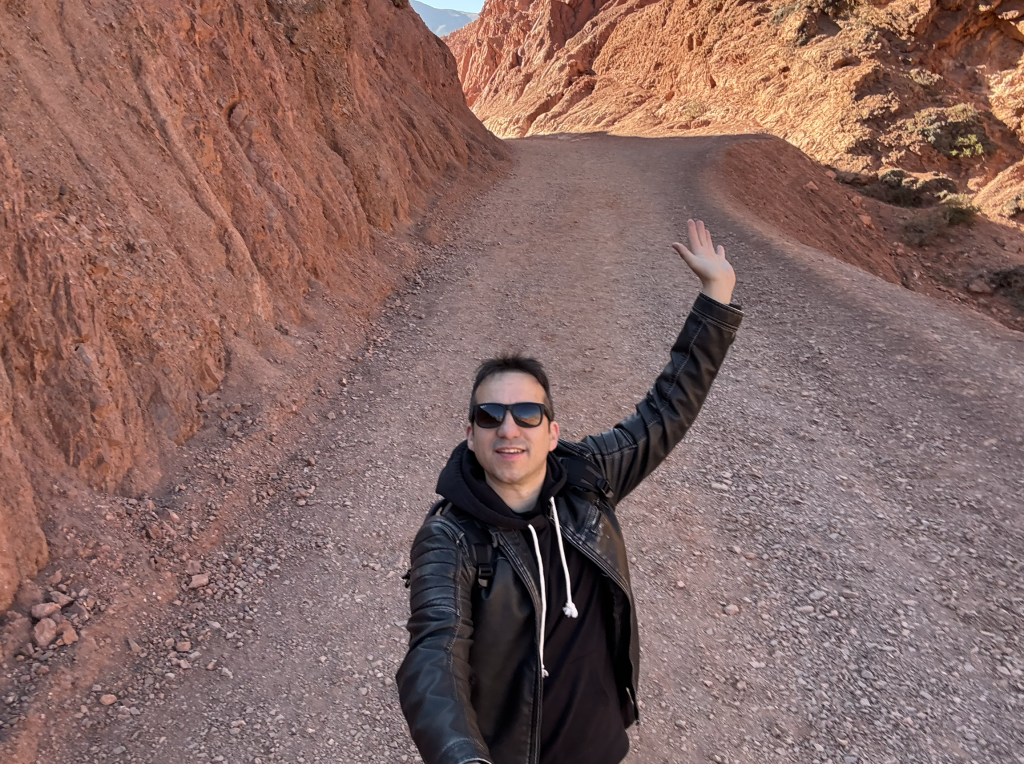
Travel Tips for Purmamarca, Tilcara and the Salinas Grandes
📍 Purmamarca
At the foot of the Cerro de los Siete Colores (Hill of the Seven Colors), this magical town is part of the Quebrada de Humahuaca. The name means “town of the lion” in Aymara. The 3 km walking circuit around the hill is perfect for sunrise or sunset.
- Altitude: 2,324 meters
- Don’t miss: local artisan markets, Santa Rosa de Lima church (17th century)
- Tip: no filters needed — the mountain changes color with the sunlight.
📍 Tilcara
A charming town with Andean culture in every corner: from music in the streets to hand-painted signs and traditional food. The Pucará fortress gives you a glimpse into pre-Inca life.
- Altitude: 2,465 meters
- Must try: street food (empanadas, locro, tamales)
- Great for: cultural immersion, local music, historical exploration
📍 Salinas Grandes
One of Argentina’s largest salt flats, located at over 3,400 meters high. The Lipán slope (Cuesta de Lipán) that leads there is an experience in itself. You must enter with a local guide, who takes you through the salar in your own vehicle.
- Altitude: 3,450 meters
- Distance from Purmamarca: 70 km (1.5-hour drive)
- Highlights: surreal salt pools, absolute silence, llamas along the route
- Tip: bring sunglasses and sunscreen — the sun reflecting off the salt is intense
